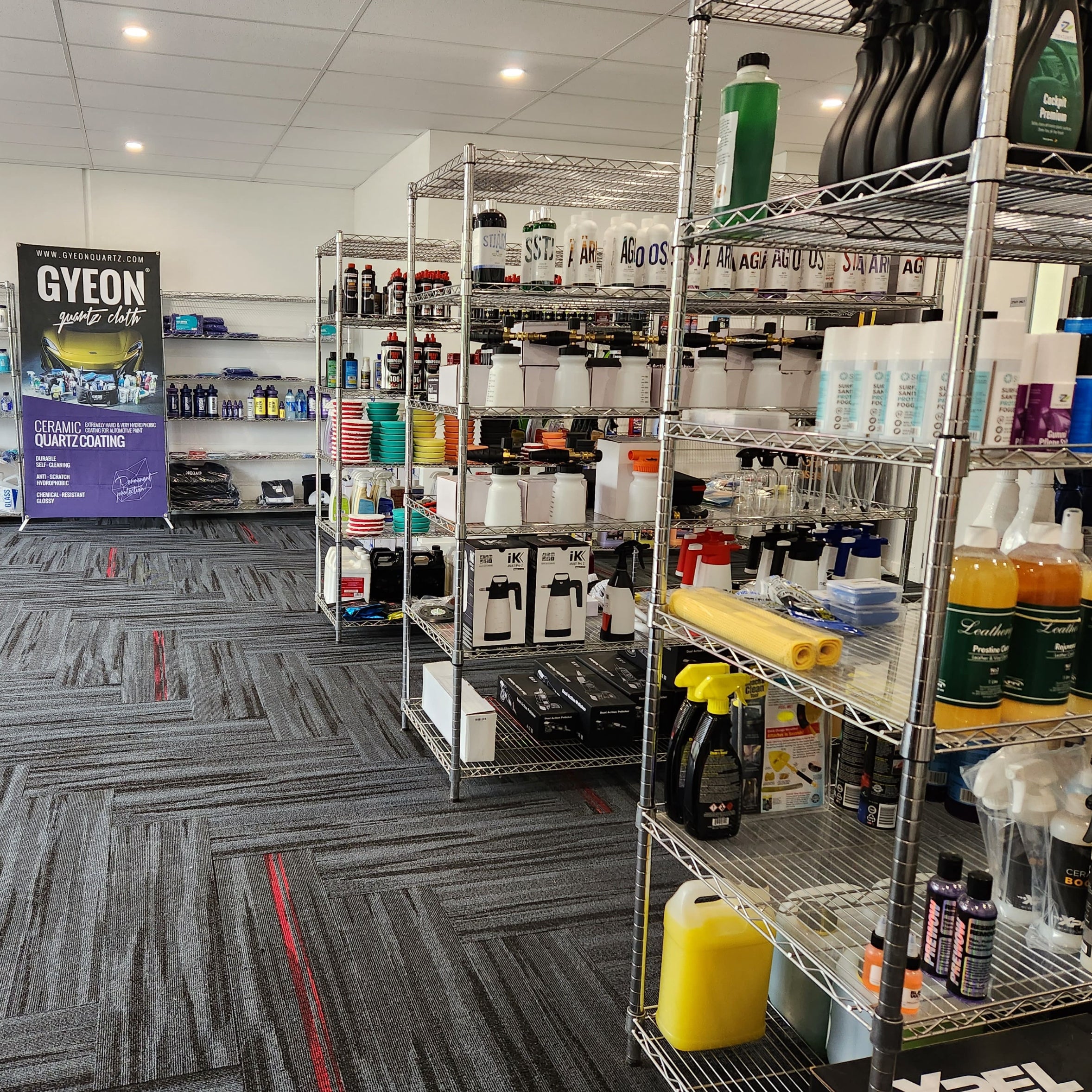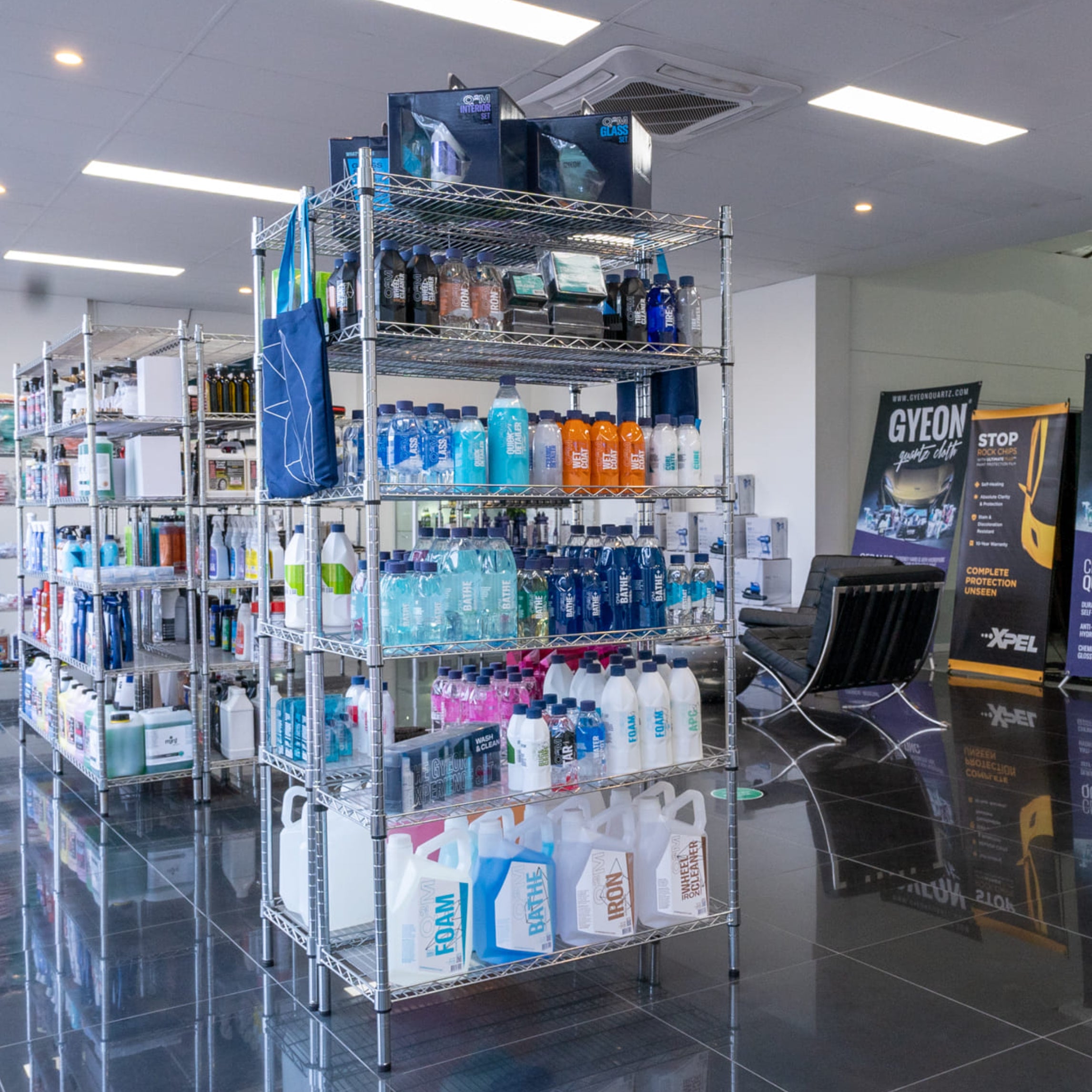Wax has been the go-to for decades—easy to apply, easy on the wallet, and delivers that classic deep gloss we all love. But in recent years, ceramic coatings have come in strong. They promise longer protection, more resistance to the elements, and that slick, water-beading finish detailers rave about. So what’s right for your car?
If you've been waxing for years and wondering whether it’s time to upgrade, or you're seeing ceramic coatings pop up everywhere and don’t know where to start, this guide is for you. We’ll compare the two head-to-head across every area that matters: application, performance, durability, cost, and what they’re like to live with day-to-day. Whether you’re a weekend warrior or someone who just wants their car looking sharp with minimal fuss, this breakdown will help you make the right choice.
The Aussie Angle: Why Paint Protection Matters More Here
Let’s not sugar-coat it—Australia’s environment is brutal on paint. The sun’s UV rays are next-level, coastal areas bring salt air into the mix, and you’ve got red dust, road tar, bugs, and unpredictable weather to top it off. If you leave your car outside for even a few days without any kind of protection, you’re inviting damage that can dull your paint, stain your clear coat, or even lead to corrosion over time.
And while a good wash helps, washing alone won’t shield your clear coat from the daily assault of contaminants. That’s why paint protection—whether it’s a traditional wax or modern ceramic coating—isn’t just for show cars or car enthusiasts. It’s essential maintenance.

The key thing to understand here is that your car’s factory paint system wasn’t designed to last forever. Yes, modern paint is far better than what we had 20 years ago, but even the best clear coat will break down if it’s constantly exposed to UV rays, acid rain, road grime and pollutants. Once that happens, fading, oxidation, and etching follow—not to mention the cost of restoring or repainting down the track.
Whether you’re team wax or team ceramic, one thing’s certain: protecting your paint in Aussie conditions is a must.
Let’s explore the two most popular ways to do that.
Car Wax – The Old Favourite
What It Is
Car Wax has been around for decades, long before ceramic coatings hit the mainstream. Most traditional waxes are either natural (like carnauba) or synthetic blends designed to sit on top of your paintwork and act as a sacrificial barrier.
They don’t bond chemically to the paint; they rest on the surface, offering short-term protection and a rich, warm gloss that’s hard to beat.
Why It’s Still Loved
- That glow: Carnauba wax in particular gives a deep, buttery finish that brings darker colours to life.
- Budget-friendly: Wax is generally cheap and widely available, making it accessible to everyone.
- Simple and satisfying: For many enthusiasts, there’s a certain joy in the process of waxing—spreading it on, waiting for that light haze, and buffing it off to reveal a gleaming surface.
- Quick resultsYou can go from dull to glossy in under an hour.
Wax is also very forgiving. Even if you mess up a little—apply it too thick, or leave it too long—it’s rarely a disaster. That’s part of why it’s such a popular starting point for people getting into detailing.
The Downside
Here’s the catch: wax just doesn’t last. Under ideal conditions, you might get 3-6 months of protection. But if your car’s out in the sun, sees rain, or sits near the coast? Expect to be rewaxing every few weeks to keep that finish alive.
Plus, waxes don’t offer much resistance to chemical fallout, road grime, or bird droppings. They can help delay the damage, but they won’t stop it.
In short, wax looks great, feels great, and is easy to use—but it’s a short-term solution.
Ceramic Coating – The Modern Marvel
What It Is
Ceramic coatings are a relatively new player in the consumer car care market, but they’ve exploded in popularity for good reason. Ceramic Coatings chemically bond to your paintwork to form a semi-permanent layer that resists environmental damage far more effectively than wax.
The big difference here is that ceramic coatings aren’t just sitting on top of your paint. They cure and harden into a protective barrier that helps your paint be more resistant to UV, contaminants, and water, all while enhancing gloss and reducing the frequency of washes.

They also offer that signature hydrophobic effect: water beads up and rolls off, taking dirt with it. That means your car stays cleaner for longer and is easier to wash when the time comes.
Why It’s Winning Fans
- Long-term protection: Depending on the product, you can get 12 months to 5 years or more from a single application.
- Superior durability: Holds up under Australia’s harshest conditions, offering enhanced defence against debris and particles that can harm your car's exterior.
- Crazy water beading: The kind that makes you want to film your bonnet every time it rains.
- Low-maintenance finish: Less dirt sticks, which means fewer washes and faster cleanups. This dedication to maintaining your vehicle's condition ensures it is shielded from potential exterior hazards.
For people who want lasting protection with minimal fuss, ceramic coatings are a game-changer. The inclusion of ceramic particles in some products further strengthens the coating’s resistance to damage.
The Catch
There’s no getting around it: ceramic coatings are more involved to apply. You need to prep the surface thoroughly; wash, decontaminate, maybe even polish—and apply in controlled conditions. Some coatings require curing time indoors, which isn’t always possible for the average driveway detailer.
Also, while ceramic coatings are very hard and durable, they aren’t bulletproof. They can still scratch, water spot, or wear down over time, especially if maintenance is ignored.
That said, even with a bit of effort up front, the payoff is well worth it.
How They Apply
Wax Application
- Wash and dry thoroughly using car washing soaps or mild detergents to avoid stripping the paint of essential oils.
- Apply a small amount of wax first to an inconspicuous area to ensure compatibility with your car's paint.

- Use a foam or microfiber applicator pad to apply wax products in small sections, ensuring even coverage for the best results.
- Let it haze, then gently buff off with a microfiber towel to achieve a radiant, high-gloss finish. Remember, using a clean microfiber cloth ensures no scratching during the process.
- Done in 30–60 minutes. Simple, low-risk, and satisfying for a polished appearance. Consider this prep work a hassle-free way to maintain your car's beauty.
Ceramic Application
- Pre-wash using a thick Snow Foam followed by a thorough two-bucket wash with a pH-neutral car shampoo to protect the coating from forming unwanted stains and scratches.
- Decontaminate your surface using a Clay Bar to ensure a smooth canvas for optimal adhesion.
- If needed, it is also best to machine polish your car. Any blemishes, marring or scratches will be locked in by your coating if you don’t treat them prior.
- Wipe down with Surface cleanser.
- Apply in small sections and level with a microfiber towel to avoid streaks and ensure a high gloss finish.
- Let it cure for 12–24 hours, away from direct sunlight.
Options like GYEON CanCoat, which can be easily sprayed onto a microfibre cloth before being wiped on and off, simplify this process by utilising advanced spray coating technology, but you still need a clean, controlled space to seal and protect effectively.

Real-World Performance in Australia
|
Threat |
Car Wax |
Ceramic Coating |
|
UV Radiation |
Basic resistance, breaks down fast |
Excellent UV stability |
|
Coastal Salt Air |
Needs frequent reapplication |
Repels salt, resists corrosion |
|
Bird Droppings |
Protects short-term only |
Better resistance and reaction time |
|
Red Dust & Sand |
Helps, but wears away quickly |
Easier cleaning, better barrier |
|
Rain & Chemicals |
Washes off easily |
Stays put through tough conditions |
If you’re dealing with harsh conditions daily, ceramic coatings win out. But if you’re mostly weekend cruising or love hands-on detailing, wax still has its place.
Maintenance Showdown
Wax
- Needs more frequent attention.
- Reapply every few washes.
- Perfect for those who enjoy detailing often.
Ceramic
- Easier to maintain day-to-day.
- Just use pH-neutral soap and a booster like GYEON WetCoat.
- Less upkeep, but when you need to fix imperfections, you’ll need to strip and reapply the coating.
Our Top Picks
Waxes
- GYEON Wax – A hybrid wax with 2–3 months of protection and amazing slickness.
- Collinite Double Coat – Old-school durability with a classic look.
Ceramic Coatings
- GYEON CanCoat – Great entry-level spray. Its ceramic coating application allows for easy use while providing up to a year of protection and ceramics shine. The polymer bonds enhance durability, ensuring your car maintains its coating shining even amidst unpredictable weather conditions and offers reliable UV protection.
- GYEON MOHS – Up to 4 years of durability with pro-grade results, thanks to its composite structure which incorporates silicon dioxide for enhanced coat protectants, safeguarding against natural elements and pollutants.
- Duragloss Enviroshield – A strong mid-range option that is budget-friendly, offering a lasting protection of 18–24 months. Its DIY product features a user-friendly application process, bolstered by polymer bonds that ensure superior defence against wear and tear.
Quick Boosters
- GYEON WetCoat – Spray and rinse for instant shine and added hydrophobic effect.
- Duragloss Aquawax – Quick and easy wax top-up between washes.

Cost Comparison
|
Product |
Price |
Lifespan |
|
GYEON Wax |
$84.99 |
Up to 6 months |
|
Collinite Double Coat |
$39.99 |
3–6 months |
|
GYEON CanCoat |
$89.99 |
6–12 months |
|
GYEON MOHS |
$124.99 |
3–5 years |
|
Duragloss Enviroshield |
$144.99 |
2–3 years |
Waxes are cheaper to start with, but ceramics win on long-term value and ease of maintenance.
So, Which One’s for You?
There’s no one-size-fits-all answer. It really comes down to how you like to care for your car, your budget, and how much time you want to spend on maintenance.
Choose Wax If:
- You enjoy regular detailing sessions.
- You’re working with a tighter budget.
- You want that classic, deep-gloss look.
Choose Ceramic Coating If:
- You want longer-lasting protection.
- You’re happy to put in the prep.
- You’d rather spend less time reapplying and more time driving.
Whatever you choose, protecting your paint is non-negotiable, especially under the Aussie sun. And with high-quality options from GYEON, Collinite, and Duragloss, you’re in good hands either way.
FAQs
1. Is it worth upgrading from wax to ceramic coating? Yes, especially for long-term protection, reduced maintenance, and better performance in tough environments.
2. Can I apply ceramic coating myself? Absolutely. Start with something like GYEON CanCoat. More advanced coatings require prep, but the DIY route is totally achievable.
3. How long does ceramic coating last? Anywhere from 12 months to 5 years, depending on the product and maintenance.
4. Can I top ceramic coating with wax? You can, but it may reduce the hydrophobic effect slightly. Some do it for added gloss.
5. What’s the best product for quick protection? GYEON WetCoat and Duragloss Aquawax. Easy to apply and excellent for in-between maintenance.





